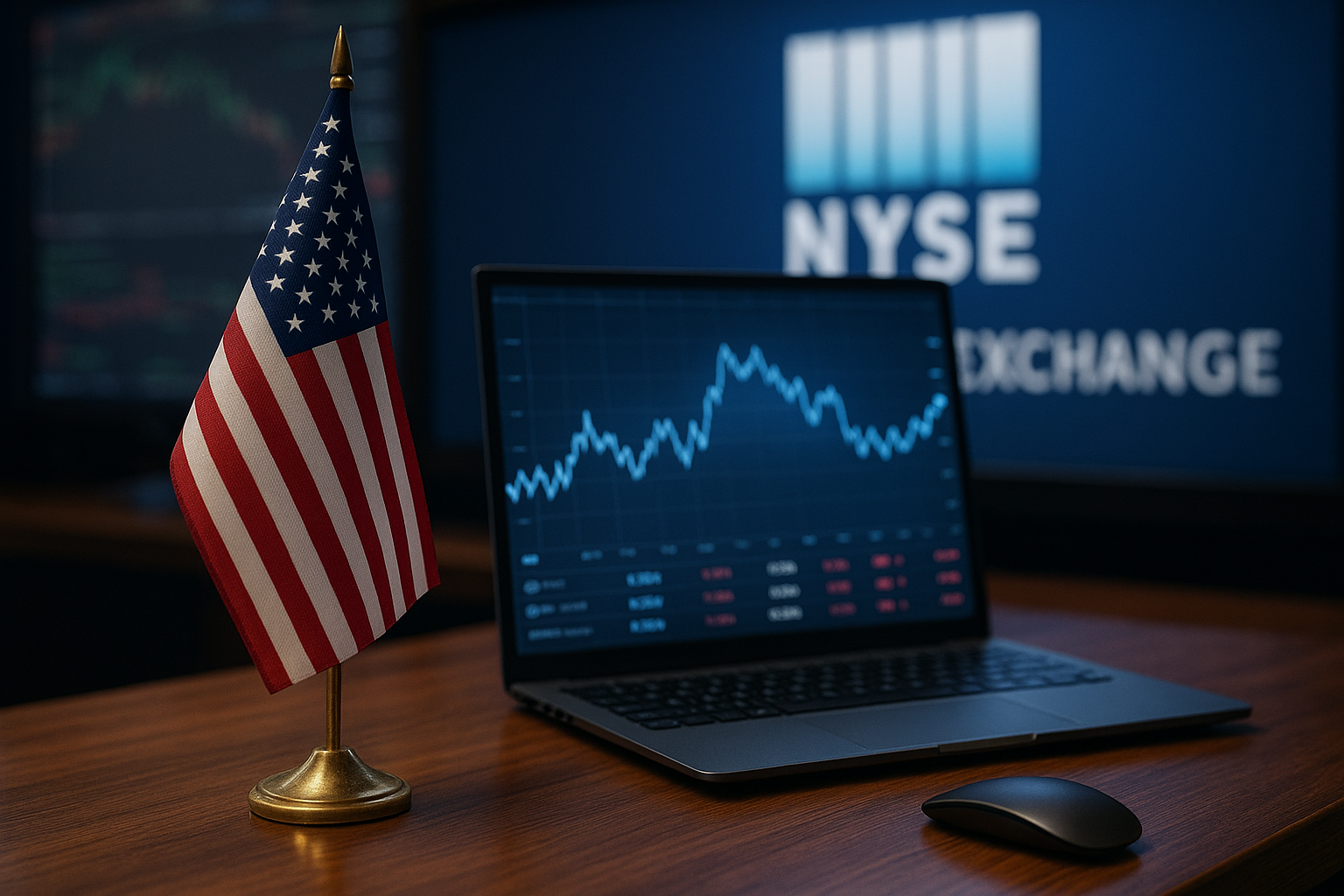Global investors entered July with a cautious sense of optimism as U.S. equity futures climbed early Tuesday, buoyed by anticipation of key labor data and high-stakes trade negotiations set to conclude next week. The S&P 500, Dow Jones, and Nasdaq futures all posted modest gains in pre-market trading, reflecting a market recalibrating itself around mixed corporate signals and looming macroeconomic catalysts.
Wall Street is coming off a volatile June, with indexes cooling after weeks of record-setting highs. Now, investor attention is squarely on two drivers: the July 9 trade policy deadline—which could reshape tariffs between the U.S., EU, and China—and June’s payroll data, set to be released by the Labor Department on Friday.
As equity markets brace for potential policy pivots, key moves in the financial sector—especially among banks—are sharpening the focus on which names might weather or outperform the coming storm.
Dividends Up, Guidance Down: A Mixed Bag of Market Signals
A standout story amid Tuesday’s quiet rally is the banking sector. Major U.S. banks, including JPMorgan Chase (JPM) and Goldman Sachs (GS), announced dividend hikes after clearing the Federal Reserve’s annual stress tests, which evaluated their resilience to economic shocks.
- JPMorgan raised its quarterly dividend by 9% to $1.25 per share
- Morgan Stanley and Bank of America also boosted dividends by 7% and 5% respectively
- The KBW Bank Index rose 0.8% in premarket trading, signaling renewed confidence in financial stability
These moves reflect capital strength across major institutions—and come as bond yields creep higher, making bank stocks more attractive to income-focused investors.
However, the optimism wasn’t universal. Centene Corporation (CNC), a major healthcare insurer, saw its stock plunge more than 8.5% after the company abruptly withdrew its full-year 2025 guidance, citing operational uncertainty and elevated medical costs. Analysts at Barclays and Wells Fargo quickly downgraded the stock, warning that the lack of forward visibility may spook institutional investors.
Why This Matters for Investors
Markets are in a transition phase—caught between inflationary pressures, monetary policy pivots, and unpredictable macro headlines. This week’s trade negotiation deadline and the June jobs report are critical indicators for Fed decision-making and investor sentiment heading into Q3.
- Payroll Data Insight: Economists surveyed by Reuters expect the U.S. to have added around 195,000 jobs in June, slightly down from May’s 220,000 figure. A weaker print could revive rate-cut speculation.
- Trade Uncertainty: The Biden administration has hinted at potential tariff realignment with both China and Europe, particularly around EVs, green tech, and semiconductors—sectors already roiled by global supply chain tensions.
Investors are increasingly hedging bets across defensive sectors and interest rate-sensitive plays. According to Bank of America’s latest fund manager survey, allocations to financials and utilities have risen in recent weeks, while tech exposure slightly declined after record Q2 gains.
Future Trends to Watch
- Labor Market Cooling vs. Fed Messaging
A softer jobs report could reignite expectations for a Fed rate cut by September, particularly if wage growth slows. Fed Chair Powell’s recent remarks emphasized a “data-dependent” path, keeping markets on edge. - Bank Confidence Plays
Post-stress test dividend hikes are a green light for dividend investors. If long-term yields continue climbing, banks may outperform broader markets in Q3. - Guidance Risk and Earnings Season
Centene’s move highlights an emerging risk: companies pulling or adjusting earnings guidance due to cost pressures or uncertain regulatory outlooks. With earnings season beginning July 15, more surprises may follow. - Tariff Tensions and Global Trade Routes
Any update on U.S.–China–EU trade deals could reshape supply chains and pricing power in key industries like autos, solar, and semiconductors. Watch ETFs like SOXX (semiconductors) and TAN (solar) for near-term volatility.
Key Investment Insight
Investors should remain nimble as July kicks off. Dividend-paying banks and value financials may offer stability amid macro uncertainty, especially if bond yields trend upward. Meanwhile, companies with unclear guidance—or in sectors exposed to trade frictions—may see sharp revaluations in the weeks ahead.
Practical positioning may include:
- Allocating to large-cap banks with proven stress test performance
- Monitoring bond market signals for Fed expectations
- Hedging sector exposure in healthcare, autos, and tech ahead of earnings and tariff decisions
Stay tuned with MoneyNews.Today for real-time insights into what’s moving markets—from earnings surprises and rate speculation to political developments that investors can’t afford to ignore.





